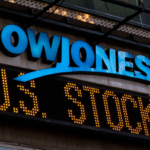Copper rose to the highest level since July 26 as surprisingly positive China manufacturing data defied analysts expectations and boosted the metals demand prospects.
On the Comex division of the New York Mercantile Exchange, copper futures for September delivery traded at $3.141 a pound at 8:54 GMT, up 0.71% on the day. Prices ranged between days low at $3.103 and high of $3.148, the strongest level since almost a week. The industrial metal rose 2.40% on Wednesday and extended current weeks advance to nearly 1.2% after falling 1.5% in the preceding two.
Copper erased earlier weekly losses and surged on Wednesday as unexpectedly upbeat China manufacturing data beat analysts expectations. China’s National Bureau of Statistics reported better-than-expected growth in factory activity. The Asian nation’s Purchasing Managers’ Index (PMI) rose to 50.3 last month, surpassing projections for a drop to 49.8 from June’s reading of 50.1. This was acknowledged as a positive sign for copper in the short-term, but analysts still expect contracting demand due to slowing growth as the Chinese government is trying to reshape the country’s economy.
Liang Lijuan, an analyst at Cofco Futures Co. in Beijing, said for Bloomberg: “We are quite surprised to see the reading standing above 50. Copper is unlikely to fall below $6,600 now that the Chinese government has pledged to stabilize growth.”
However, a separate private PMI report showed an 11-month low in manufacturing activity, confirming concerns over short-term growth. The country’s flash HSBC/Markit PMI fell to 47.7, compared to June’s final reading of 48.2, the lowest in 11 months. Today, Markit Economics confirmed its preliminary reading of 47.7, which signaled “a deterioration of business conditions for the third consecutive month”.
Copper was also supported as the FOMC said in its after-meeting statement yesterday that Fed will keep its Quantitative Easing program intact as it sees risks of disinflation. This will benefit dollar-denominated commodities as they trade inversely to the dollar and ongoing monetary easing programs make a currency cheaper.
The Federal Open Market Committee said: “The committee recognizes that inflation persistently below its 2 percent objective could pose risks to economic performance, but it anticipates that inflation will move back toward its objective over the medium term.” Bernanke and his colleagues said that further improvements of the labor market are required, with the Unemployment Rate still unchanged at 7.6% prior July’s reading on Friday. Meanwhile, inflation remained stable and below the central bank’s 2% target, hinting risk of disinflation.





